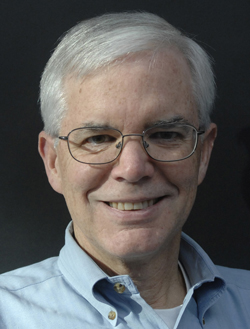
| Vol.
XXIII No.
5 May / June 2011 |
| contents |
| Printable Version |
Sam Allen New Faculty Chair
Samuel M. Allen, the POSCO Professor of Physical Metallurgy in the Department of Materials Science and Engineering, will succeed Tom Kochan as Chair of the Faculty on July 1, 2011 after serving the past year as Chair-Elect. Mary Fuller and Chap Lawson will have the roles of Associate Chair of the Faculty and Secretary of the Faculty, respectively.
Sam grew up on a family farm in Cannondale, CT, and attended the Wilton, CT, public schools. He received the BE in Metallurgy from Stevens Institute of Technology in Hoboken, NJ, in 1970. An important mentor at Stevens urged him to attend graduate school at MIT where he earned the SM in 1971 and the PhD in 1975, both in Metallurgy. After four years as a Research Associate, he joined the MIT faculty in 1979. He was a Visiting Lecturer at UC Berkeley in 1976 and worked during a sabbatical in 1987–88 for Nippon Steel in Kawasaki, Japan. Much more recently, beginning in 2009, he’s been a student in the Graduate Program in Conflict Resolution and International Relations at UMass Boston. He will receive Graduate Certificates in Mediation and Organizational Conflict in June 2011.
Sam’s research has spanned a range of topics in metallurgy, including phase transformations and mechanical behavior. Materials of interest in his work include intermetallic compounds, steels, superalloys, and shape-memory alloys. He holds seven patents relating to the processing and applications of metal parts produced by three-dimensional printing, and he has published more than 100 technical articles.
His teaching has included a healthy mix of assignments as lecturer in DMSE core subjects at both the undergraduate and graduate level. Two teaching collaborations with colleagues resulted in textbooks. With Ned Thomas, he wrote an undergraduate text, The Structure of Materials (1999) and with Bob Balluffi and Craig Carter he wrote the graduate text Kinetics of Materials (2005).
He has received the Outstanding Graduate Advising and the Outstanding Graduate Teaching Awards from the DMSE graduate student body, and the Marion and Capers MacDonald Award for Excellence in Advising and Mentoring from the School of Engineering. Sam is a Fellow of ASM International.
Most years since joining the faculty Sam has been a freshman advisor. He created one of the six inaugural Freshman Advisor Seminars, “Modern Blacksmithing and Physical Metallurgy.” This seminar has been offered annually since its inception in 1986. He’s served DMSE in many capacities, including Undergraduate Advisor, Graduate Officer, Executive Officer, and as Acting Department Head for nine months in 2004. His Institute service includes the IAP Policy Committee, the Nominations Committee, Secretary of the Faculty from 1996–2000, Faculty Policy Committee, Committee on the Hobby Shop, and Co-Chair and Chair of the CUP Subcommittee on the Communications Requirement for several years.
Sam lives in the Rectory of St. John’s Episcopal Church in Jamaica Plain. His wife, Anne Fowler, has been Rector there since 1992. He and Anne also have a home in Georgetown, ME, in Maine’s Midcoast Region. They have three grown children and one granddaughter, and all live close to home.
| Back to top | |
| Send your comments |
| home this issue archives editorial board contact us faculty website |
